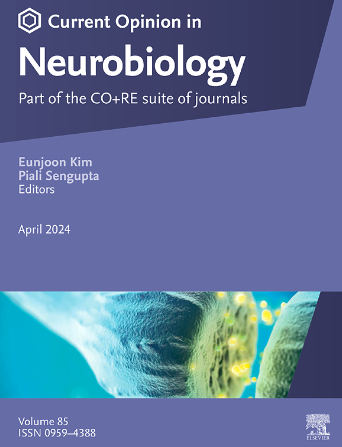Single-cell technology grows up: Leveraging high-resolution omics approaches to understand neurodevelopmental disorders
IF 5.2
2区 医学
Q1 NEUROSCIENCES
引用次数: 0
Abstract
The identification of hundreds of neurodevelopmental disorder (NDD) genes in the last decade led to numerous genetic models for understanding NDD gene mutation consequences and delineating putative neurobiological mediators of disease. In parallel, single-cell and single-nucleus genomic technologies have been developed and implemented to create high-resolution atlases of cell composition, gene expression, and circuit connectivity in the brain. Here, we discuss the opportunities to leverage mutant models (or human tissue, where available) and genomics approaches to systematically define NDD etiology at cellular resolution. We review progress in applying single-cell and spatial transcriptomics to interrogate developmental trajectories, cellular composition, circuit activity, and connectivity across human tissue and NDD models. We discuss considerations for implementing these approaches at scale to maximize insights and facilitate reproducibility. Finally, we highlight how standardized application of these technologies promises to not only define etiologies of individual disorders but also identify molecular, cellular, and circuit level convergence across NDDs.
单细胞技术发展:利用高分辨率组学方法来理解神经发育障碍
在过去十年中,数百种神经发育障碍(NDD)基因的鉴定导致了许多遗传模型,用于理解NDD基因突变的后果和描述假定的疾病神经生物学介质。与此同时,单细胞和单核基因组技术已经被开发和实施,以创建大脑中细胞组成、基因表达和电路连接的高分辨率图谱。在这里,我们讨论了利用突变模型(或人体组织,如果有的话)和基因组学方法在细胞分辨率上系统地定义NDD病因的机会。我们回顾了应用单细胞和空间转录组学研究人类组织和NDD模型的发育轨迹、细胞组成、回路活动和连通性的进展。我们讨论了大规模实施这些方法的考虑因素,以最大限度地提高洞察力和促进可重复性。最后,我们强调了这些技术的标准化应用如何不仅可以定义个体疾病的病因,还可以识别ndd之间的分子、细胞和电路水平的趋同。
本文章由计算机程序翻译,如有差异,请以英文原文为准。
求助全文
约1分钟内获得全文
求助全文
来源期刊

Current Opinion in Neurobiology
医学-神经科学
CiteScore
11.10
自引率
1.80%
发文量
130
审稿时长
4-8 weeks
期刊介绍:
Current Opinion in Neurobiology publishes short annotated reviews by leading experts on recent developments in the field of neurobiology. These experts write short reviews describing recent discoveries in this field (in the past 2-5 years), as well as highlighting select individual papers of particular significance.
The journal is thus an important resource allowing researchers and educators to quickly gain an overview and rich understanding of complex and current issues in the field of Neurobiology. The journal takes a unique and valuable approach in focusing each special issue around a topic of scientific and/or societal interest, and then bringing together leading international experts studying that topic, embracing diverse methodologies and perspectives.
Journal Content: The journal consists of 6 issues per year, covering 8 recurring topics every other year in the following categories:
-Neurobiology of Disease-
Neurobiology of Behavior-
Cellular Neuroscience-
Systems Neuroscience-
Developmental Neuroscience-
Neurobiology of Learning and Plasticity-
Molecular Neuroscience-
Computational Neuroscience
 求助内容:
求助内容: 应助结果提醒方式:
应助结果提醒方式:


